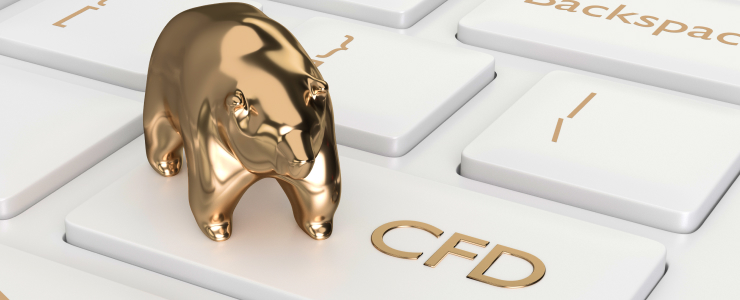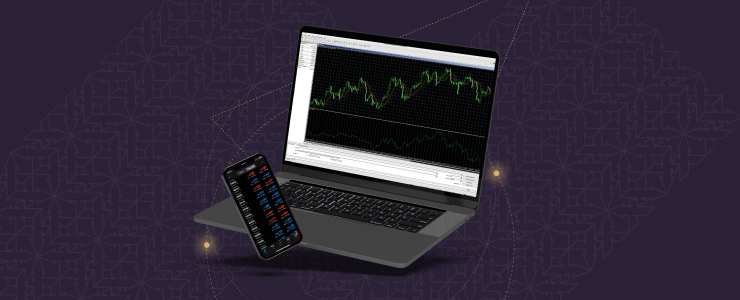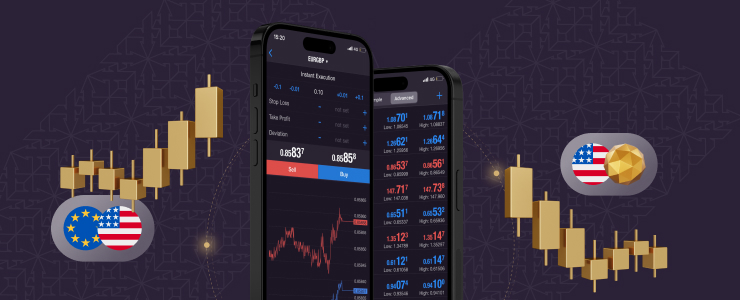What are CFDs and how does CFD trading work? If you are new to trading, you are probably wondering what all this means, but we will discuss all of it in this easy-to-follow article that will give you an in-depth look into Contracts for Difference (CFDs) and the possibilities they offer to traders compared to more traditional forms of investing.
With CFDs, you can trade the price changes of many trading instruments. With their flexibility, lower costs involved compared to traditional investing and ease-of-access through the platforms of CFD brokers, CFDs have become the preferred type of trading investment among many people. Understanding how they work, but also the risks involved, will allow you to explore trading opportunities with confidence.
What is a CFD?
“Contract for Difference” (CFD) refers to an agreement between you, the trader, and your broker. The “contract” specifies that one of the two parties will pay the other, depending on which direction the price will move. Analysts estimate the amount based on the difference between the opening and closing prices. That means the price at trade entry compared to the price at exit.
Flexibility
CFD trading allows you to speculate on the value of an underlying asset, instead of trading the actual asset itself. The “derivative” nature of CFDs allows them this flexibility as well as several other features which have made this type of trading particularly attractive to a whole new generation of traders. Since the 1990s, CFDs have grown to be worth billions of dollars and have amassed a growing number of traders from all parts of the world who want to speculate on the movement of prices without paying a lot of money to own the real, material asset, be it gold, stock or currency.

Exploring global markets with ease
Exactly, this key feature—not owning the underlying asset—has allowed traders to explore a wide range of functionality features. CFDs can be used to trade several markets such as forex, metals, stocks, indices, and commodities. This allows you to expand your portfolio much easier and in a more cost-effective manner, enriching your portfolio while managing risk. Also, it doesn’t matter which market you are trading, the process of buying or selling a CFD is the same.
Buying and selling
CFD trading enables investors to sell when they identify the market value of an asset exceeds its actual worth. Through short selling, investors have the option to explore opportunities when the price falls instead of following a more conventional approach of buy and hold. Traders can add stop-loss orders when they sell short to manage trading risk as well as minimise potential losses.
The double-edged sword
Everyone loves CFDs as they enable you to trade with borrowed capital, or as it is called “leverage.” Using leverage allows you to trade with smaller capital and to borrow the rest from the broker. Leverage trading utilises your brokerage account capital as margin, your deposit, so you can only put up a small percentage of the position costs for buying. Using leverage means that traders can calculate profits and losses based on the complete position size regardless of the applied margin amount.
Let’s use an example. Gold is a precious metal that you can trade as a CFD. If you invested $100 into a position with 10x leverage, the total size of your position would be $1,000. If the price rises by 5%, your position would be worth $1,050, with $50 being your profit. The price drops by 5%, then your position would be worth $950, which means you incurred a loss of $50. You completed the same trade without leverage, your profit or loss would be $5. As it is clear from this example, leverage helps you go after bigger profits, but it will also increase your losses. This is why it is often called a double-edged sword.

Risk management
If you are a beginner, you should use low leverage — and use it very cautiously.
This helps prevent wiping out your account due to inexperience. Higher leverage should only be used by experienced traders. They need to fully understand the risks and have years of trading, knowledge, and solid skills.
How do you trade a CFD?
If you are a traditional investor, then you would probably know the old adage of “buying low and selling high.” While CFD trading fits the same logic, CFD traders have the flexibility to go after gains by selling high and buying low.
If you buy a CFD in Tesla stock and the price rises, your broker will credit your account accordingly once you have closed the position. If the price drops and you incur a loss, your account will be debited with the relevant amount. When you sell short, instead of going long on a CFD position, you will only profit if the price of the underlying asset drops.
No matter what trading instrument you choose, the profit and loss on a CFD trade are always estimated in the same way.
Whether your CFD is in EUR/USD, gold or oil, you are always speculating on the direction of the price and you don’t own the underlying asset.
Overnight fees
When you trade with leverage you may accumulate overnight financing fees. While these may be limited, you need to factor them in in your overall strategy, so you can manage your costs and plan ahead. CFDs are mainly used for short-term trading, so traders tend to avoid keeping positions open for too long and to avoid incurring such extra fees which may eat through their potential profits. If you want to trade CFDs over a longer period of time, these fees may not only eclipse any potential profits, but they may magnify any losses too.
Why trade CFDs?
Here are a few reasons why traders chose CFD trading:
- Trade with leverage
- Gain access to a wide range of markets
- Hedge your positions
- Extended trading hours
- Short selling
- Immediate cash settlement
Potential risks involved when trading CFDs

Counterparty risk
CFDs are traded over-the-counter (OTC) with a broker, something which creates counterparty risk. If a broker becomes insolvent, you may incur financial losses, so ensure you always choose a leading, reliable broker with years of experience in the industry.
Closing positions
The CFD broker will close all your CFD positions if you lack sufficient funds in your account. The broker may warn you so you can fund the account to keep your positions open.
Overnight costs
During hours with less trading activity, news and events may move the markets unpredictably creating large movements which may hurt your positions. If you leave long CFD positions overnight, you may incur funding charges while short CFD positions will incur a borrowing fee.
Volatility
If there is sharp volatility, the margin requirement may be adjusted with very little notice.
Ultimately, CFDs enable you to explore market moves with the potential to make higher returns, but they also involve the higher risk of losses. You should always carefully analyse the market and use risk management strategies. So, before you trade CFDs, ensure whether you want to trade with more or less funds, more or less aggressively or as a way to mitigate risk. Always keep in mind your personal trading goals (both short-term and long-term), and stay focused, always remaining faithful to your trading plan.
Disclaimer:This information is not considered investment advice or an investment recommendation, but instead a marketing communication.




